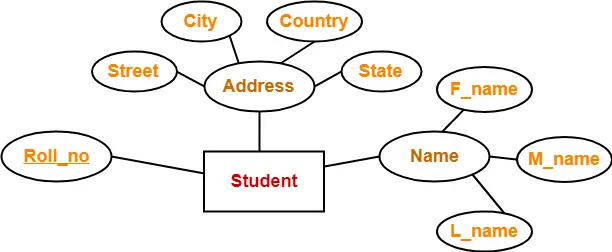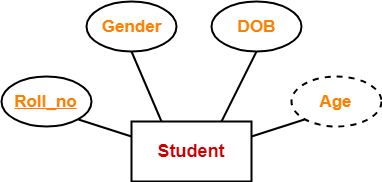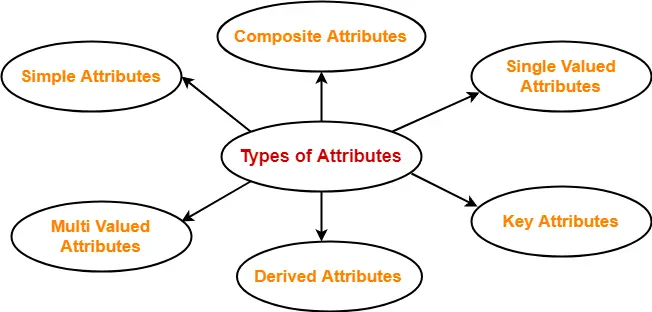Explain Different Types of Attributes in Database
Attributes that identify a person would include such things as social security number or any combination of letters and numbers that uniquely identify a person. An interval-scaled attribute has values whose differences are interpretable but the numerical attributes do not have the correct reference point or we can call zero points.
Alternate Key is a column or group of columns in a table that uniquely identify every row in that table.

. Attribute A characteristic or trait of an entity type that describes the entity for example the Person entity type has the Date of Birth attribute. The purpose of this article is to clearly define data attributes explain the different types and show examples in a simple database as. Attributes that identifyentities entity identifiersare called key attributes.
Types of Attributes Simple attribute. Quantitative Attributes such as Discrete and Continuous Attributes. Boolean TRUE or FALSE data often migrated to YES or NO text or 1 and 0 numbers.
The individual ID of that. Answer 1 of 6. They are not aggregate attributes Date a date of a given year and month.
The standard domain types include data values for characters numerals currency dates times and Booleanentries a logical value of either true or false. Simple attributes are atomic values which cannot be divided further. Attributes are classified as simple or composite.
Composite attributes are made of. Key attribute or primary attribute. Multivalued attributes can have more than one values.
A column header of a database table is an attribute. Consider an example of temperature in. Numerical attributes are of 2 types interval and ratio.
Candidate Key is a super key with no repeated attributes. For example it can be the number of a certain invoice eg. An entity type typically corresponds to one or several related tables in database.
For example a students phone number is an atomic value of 10 digitsComposite Attribute Composite Attribute. Is an ID key letter or number that uniquely identifies that item. Lets consider a table Candidate key.
Candidate Key is a set of attributes that uniquely identify tuples in a table. Attributes should be totally dependent on the primary key to provide what is called functional dependency. A composite attribute not to be confused with a composite key is an attribute that can be further subdivided to yield additional attributes.
Most RDBMSs also accept the BLOBbinary large object domain type which stores binary objects such as graphics. Complex Attribute this is the rarely used attribute. Record The storage representation of a row of data.
Some of these attributes are mentioned below. Entities of similar type are placed in one entity settable. Are made of more than one simple.
Text often referred to as string means simply any combination of letters or other symbols instead of numbers. Francis and the lights - friends lime green hat near paris. Types of attributes in database.
When the object or thing is sold to some customers it is necessary to record its details and other specifications of the product. For example age should not be stored directly. An attribute that cannot be further subdivided into components is a simple attribute.
3 Simple and Composite Attributes 4 Single-valued and multi-valued Attributes 5 Derived Attributes Optional attributes A required attribute is an attribute that must have a value in it while an optional attribute may not have a value in it and can be left blank. The purpose of Foreign keys is to maintain data. For example a students phone number is an atomic value of 10 digits.
Simple Composite Single-valued Multi-valued and Derived attribute. The different types of keys in the database management system DBMS are as follows Primary key Super key Candidate key Alternate key Artificial key Foreign key Primary super candidate alternate and artificial keys show the property of uniqueness whereas the foreign key shows referential integrity. Each attribute has a certain domain and it may be involved in forming a key.
Qualitative Attributes such as Nominal Ordinal and Binary Attributes. One more attribute is their ie. Member record The representation of the entity as it is stored in individual source.
For example the attribute ADDRESS can be subdivided into street city state and zip code. Group of attributes that easily identifies a tuple forms a key. There are five such types of attributes.
Composite and Simple Attributes. It is in simple terms binary data. However their values are derived from other attributes present in the database.
SQL provides a number of domain types to assign to attributes. This type of attribute does not include in the physical database. Foreign Key is a column that creates a relationship between two tables.
For example an Employee entity may have more than one Email ID attributes in the same cell. There are different types of attributes. Is an attribute where more than one description can be provided.
Instead it should be derived from the DOB of that employee. Similarly client is an entity and its related attributes are client name client ID address contact Order number Car model car color etc. Data can be added and subtracted at an interval scale but can not be multiplied or divided.
Attributes that describeentities are called non-key attributes. An entity can be a tangible entity or an intangible entity. In this example RollNo Name and Result are attributes of the object named as a student.
Functional dependency is reliant on all the attributes describing the primary key.

Types Of Attributes With Example

Types Of Attributes Dbms Gate Vidyalay


Comments
Post a Comment